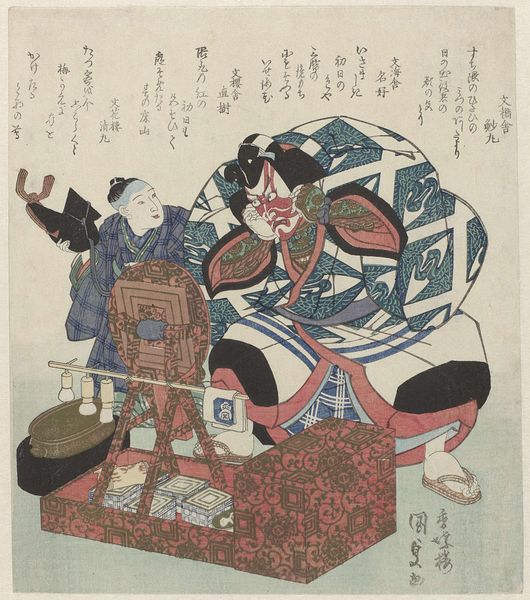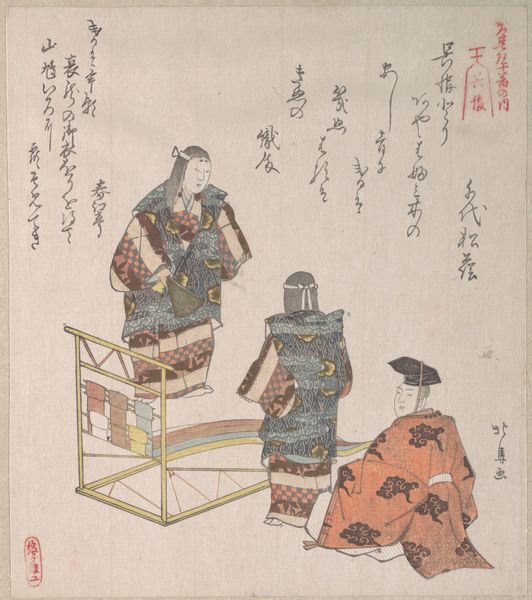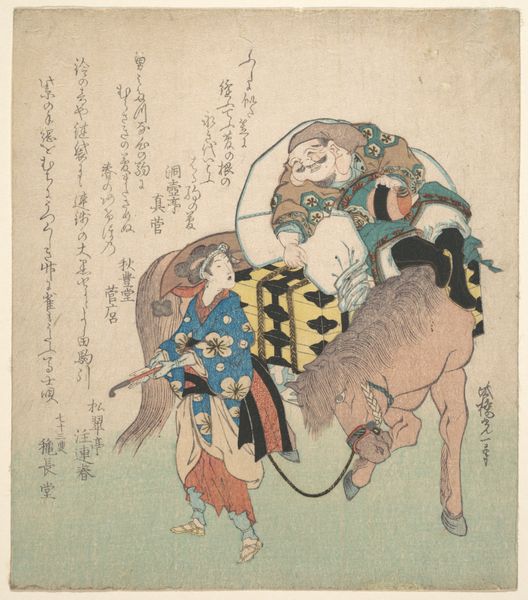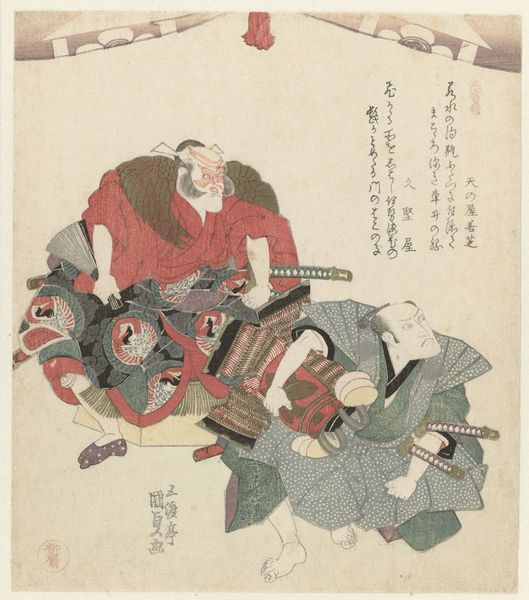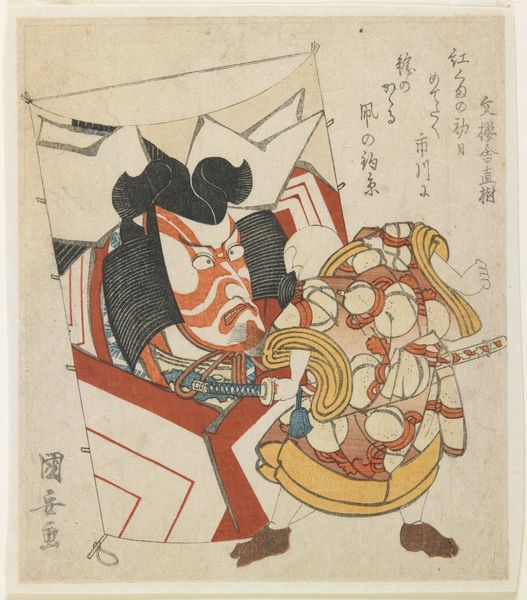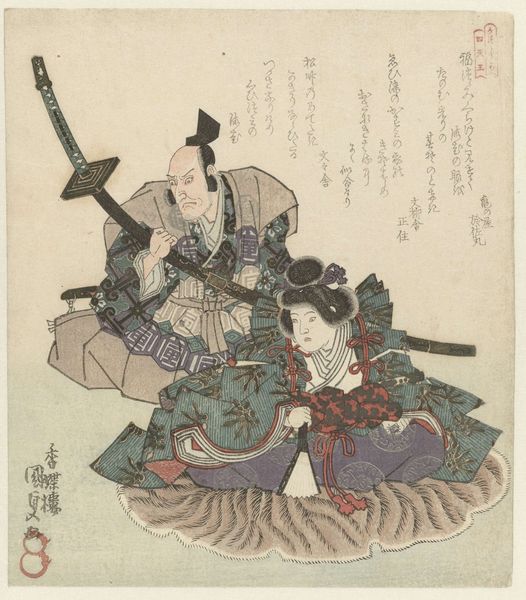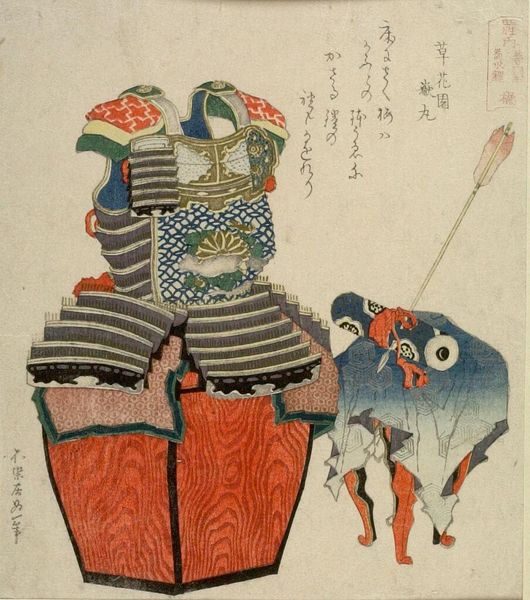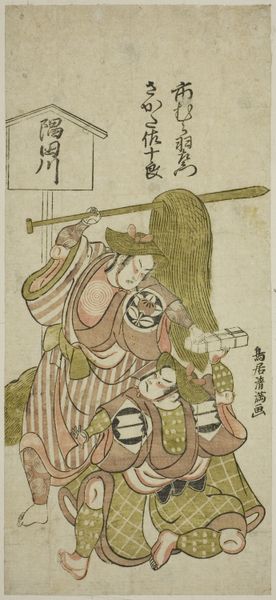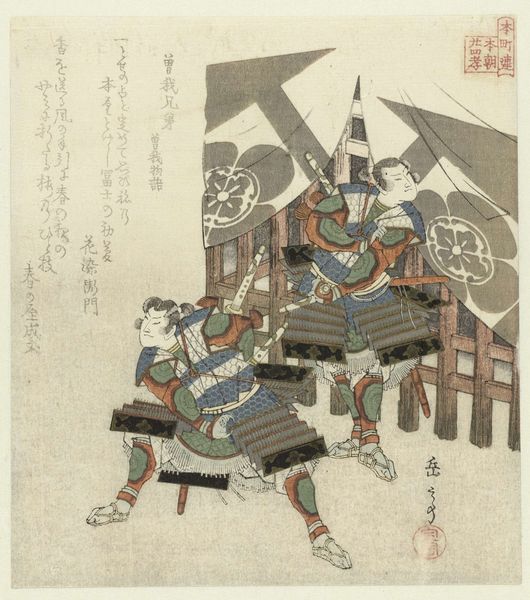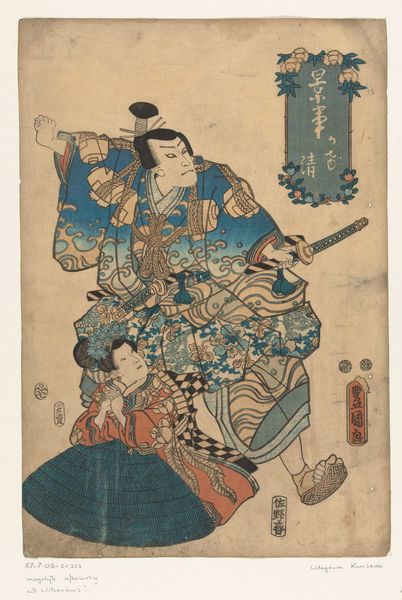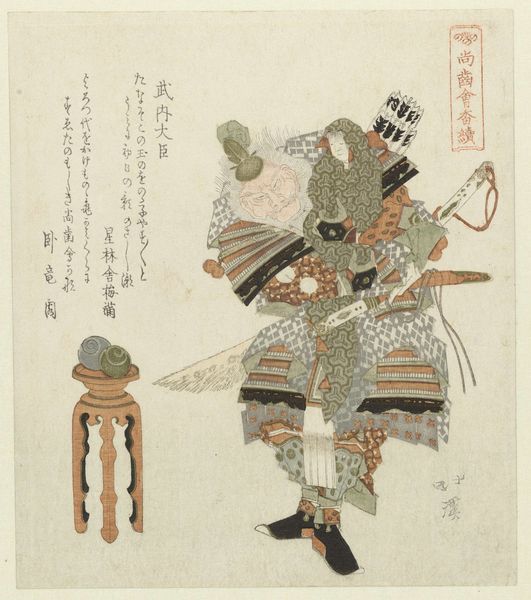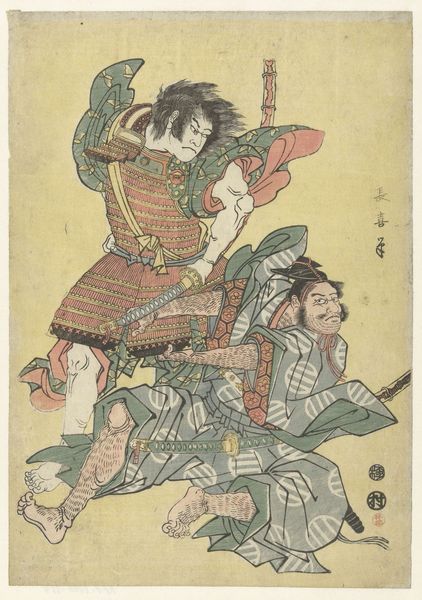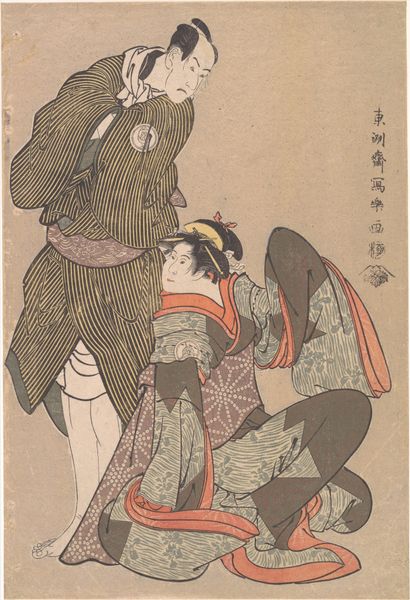
Harnas van de Tachibana familie met rolschildering c. 1890 - 1900
0:00
0:00
katsushikahokusai
Rijksmuseum
Dimensions: height 212 mm, width 184 mm
Copyright: Rijks Museum: Open Domain
Editor: So, this is the "Harnas van de Tachibana familie met rolschildering," created sometime between 1890 and 1900. It’s currently held at the Rijksmuseum. I am immediately struck by the contrast between the incredibly detailed armor and the more ephemeral scroll; it makes me think about permanence and loss. How do you read this work? Curator: It's fascinating to consider the historical context here. This piece appears at a time when Japan was rapidly modernizing. Depictions of samurai armor became symbolic, almost nostalgic, representing a receding past even as the nation forged ahead. Is this presentation celebratory or mournful, and for whom? How would this piece function in both Japanese society, and through a Western lens of orientalism? Editor: That’s a great point. It’s not just an image of armor; it's an image laden with meaning during a period of huge transformation. Does the inclusion of the rolschildering enhance or complicate this symbolism? Curator: It complicates it beautifully. The rolschildering – a scroll painting – is damaged, pierced by an arrow. The whole image could be seen as a commentary on the vulnerability of tradition, the way the past is literally pierced by the present. Consider also the social function of museums during this time; pieces such as these served a narrative function, positioning their colonial origins. Editor: So, this isn't just about individual memory but about constructed, collective memory through museum practices. I see now that both elements tell separate but integrated narratives of identity. Curator: Precisely. And both, ironically, are artifacts we are viewing as art in a modern Western museum. The layers of historical and cultural forces at play here really highlight the public role that art assumes, beyond aesthetics alone. Editor: I never considered the ways that societal changes and museum curation can actively shape the perception of historical images like this! Curator: Thinking about art within the frame of cultural power is vital in seeing all that this image represents.
Comments
No comments
Be the first to comment and join the conversation on the ultimate creative platform.
